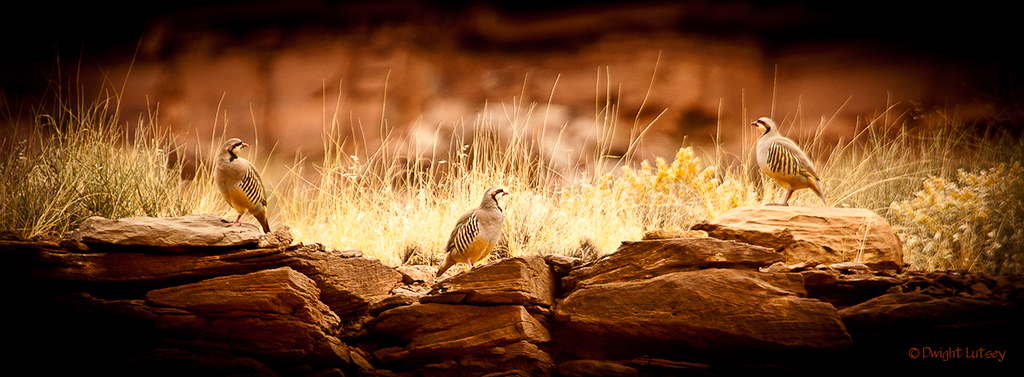 Chukar Long Canyon Dead Horse Point click to enlarge
Chukar Long Canyon Dead Horse Point click to enlarge
A lot of you have written in saying “Hey Director, What makes you so special? That wildlife photography isn’t so hard. My Uncle Skid, the loopy bastard, took a picture just as good as the one you posted the other day. Why should you get the big bucks? I want my donation back!”
Well Dear Reader, it’s like this. First let’s get one thing straight. You ain’t getting that donation back. Once you send it in and your check clears it’s gone. The Institute don’t do refunds. And stop calling, I’ve put you on Caller Reject. Besides who donates .86 cents, it cost me more than that to drive down to town in that blizzard and deposit that check.
But the important issue you raise, that of “that wildlife photography isn’t so hard” needs to be addressed. Perhaps some background might help to clarify what goes into producing an image such as the one above.
First is just wading through all the technical aspects of a photography shoot like this one. You have permits to get, which means dealing with government bureaucracy, there’s the talent to obtain which means talent agents, the scum of the entertainment world, there’s the talent themselves who are almost always prima donnas and impossible to work with, and then you get into the crew required to get the shoot ready.
We’re talking staging people who create the set, grips, lighting directors, food services for the talent and the crew, permits to park the catering bus on federal land, makeup, costuming, on site teachers to provide schooling for any minors that may be on the set and Chukar have a bunch of minors, they’re up to their little orange beaks in kids, and on and on. Now there’s even the folks from SPCA and now Peta to make sure no one hurts the feelings of the talent. They monitor how long you keep the talent in a particular pose so they’re not over-worked and see that they get breaks every 30 mins regardless of what that does to the light.. What it all adds up to is mucho dinero and the equivalent amount of brain-shredding hassle.
Then there is actually working with the talent, if they’re not stuffing their fat little faces at the seed bar until they can hardly waddle onto the set, they’re complaining about makeup, or the costumers didn’t fluff their feathers just right, or they won’t stand in that spot because that’s doesn’t show their good side or they hold the entire shoot up while they take that call. “I’ll just be a minute.” Sometimes it easier to just shoot flowers, all they do is wiggle in the wind a little. That’s an easy problem to solve.
After fighting through all that you may actually get the picture. Then you have post processing, calling your agent so he can get this thing sold and coordinate the print and video sales and try to get that book deal sewn up. This ain’t easy bucko, in fact it’s pretty damn hard. I’d like to see your loopy Uncle Skid pull this off.
I didn’t even get into what happens when we do what is known in the biz as a ‘hazardous shoot’ or what we like to call “You bet your ass someone’s gonna die” situation when we work with the rough trade of the wildlife world, Grizzlies and Wolves. You wouldn’t believe what it costs to have a full-fledged medical team with life-flight helicopters standing by.
Thanks for the letter, it allows us to show you and the rest of our loyal readers what actually happens behind the scenes on your typical, average wildlife shoot. And why I get the big bucks. Hope this clears things up and tell your loopy Uncle Skid I said ‘hey’.

You must be logged in to post a comment.